Dave Buckhout .
Original Publication Date: 2001
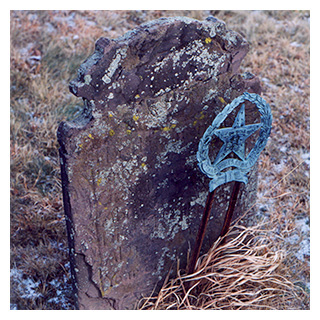 When Thomas Wolfe penned, “You Can’t Go Home Again,” he was speaking a wisdom I did not initially understand. Having gone away to college in 1988, and having been in the Atlanta-area since 1993, I had become pretty well removed from the idyllic, colonial New England town where I grew up. When I returned in the late ’90s—my first visit “home” of any length since leaving—this notion was made well apparent. Located up I-84 about twenty-five minutes north and east of the state capital in Hartford, Tolland had evolved from the crossroads town I knew. The woodland back roads I remember as nothing more than avenues for late-night youthful rebellion had been freshly paved, dangerous curves having been straightened and built up with expensive homes. Large segments of thick forest and farmland now held cluster homes and other such developments. There was even a strip-mall where I remember a couple of sand hills. But whereas all this I could understand as simple progress, it all came “home” to me—this certain feeling of alienation—when I turned south off of Garnet Ridge, my one time street of residence, and onto Old Kent Road. This stretch of road had a generation before been turned into a narrow winding mile-long dirt trail that led to a secluded turnaround when the Wilbur Cross Highway (now I-84) barreled its controlled-access lanes through town and cut the road in two. I figured that some things just can’t change. And the turnaround at the end of Old Kent was the bulwark of my theory. But what I came across wasn’t a remote forgotten road, a place that had been big adventure when I was a kid and a perfect place to stash beer in the days when that became a concern. Instead I drove up to a shining new housing development, complete with fresh pavement and sod yards. I was completely disoriented, might as well have been on the surface of the moon. If for some reason Wolfe is posthumously looking for verification of his theory, he has to look no further than Tolland’s Old Kent Road.
When Thomas Wolfe penned, “You Can’t Go Home Again,” he was speaking a wisdom I did not initially understand. Having gone away to college in 1988, and having been in the Atlanta-area since 1993, I had become pretty well removed from the idyllic, colonial New England town where I grew up. When I returned in the late ’90s—my first visit “home” of any length since leaving—this notion was made well apparent. Located up I-84 about twenty-five minutes north and east of the state capital in Hartford, Tolland had evolved from the crossroads town I knew. The woodland back roads I remember as nothing more than avenues for late-night youthful rebellion had been freshly paved, dangerous curves having been straightened and built up with expensive homes. Large segments of thick forest and farmland now held cluster homes and other such developments. There was even a strip-mall where I remember a couple of sand hills. But whereas all this I could understand as simple progress, it all came “home” to me—this certain feeling of alienation—when I turned south off of Garnet Ridge, my one time street of residence, and onto Old Kent Road. This stretch of road had a generation before been turned into a narrow winding mile-long dirt trail that led to a secluded turnaround when the Wilbur Cross Highway (now I-84) barreled its controlled-access lanes through town and cut the road in two. I figured that some things just can’t change. And the turnaround at the end of Old Kent was the bulwark of my theory. But what I came across wasn’t a remote forgotten road, a place that had been big adventure when I was a kid and a perfect place to stash beer in the days when that became a concern. Instead I drove up to a shining new housing development, complete with fresh pavement and sod yards. I was completely disoriented, might as well have been on the surface of the moon. If for some reason Wolfe is posthumously looking for verification of his theory, he has to look no further than Tolland’s Old Kent Road.
Figuring that the early settlers might look upon my Tolland with a nostalgic dismay aligned with my own, I thought I would write about the eighteenth-century days of a Tolland I never knew. Regardless of the growth that has recently enveloped the town, Tolland still contains that unique character only “Ye Olde” New England townships can produce. Its history is, by American standards, an ancient record …
* * *
In 1861, then president of the Tolland Historical Society and early biographer of the town, Loren P. Waldo, opined—in the classic traits of the region—this frank, honest observation:
In looking back through the long vista of years since this town was first known, we can discover no incident of thrilling interest connected with its history. We can point to no spot where the white and red men have met in mortal combat; nor where hostile armies have sought for vengeance in the bloody encounter … Nor can we find the footsteps of any distinguished personage upon its territory who has attracted the gaze of the world by his deed of daring or acts of self-devotion … The history of Tolland … is not calculated to interest the marvelous … but like a gentle current bears … facts worthy of our notice.
As was all of the United States at one time, Tolland and Connecticut was Native-American land. Various Algonquin tribes inhabited the region, the larger Pequot and Mohegan, and the smaller Nipmuck, Podunk, Shenipset and Skunkamaug all sharing a common-lineage, and language. Though there was plenty of violent push-and-pull between the first whites in the region and native tribes (mainly in the form of raids), the land that would be Connecticut itself was taken without the long ranging campaigns that would typify Indian removal out west. The most significant was the short, but for the natives on the receiving end, disastrous “Pequot War,” which opened up the fertile Connecticut River Valley to white settlement. In 1633, Windsor became the first permanent settlement in Connecticut. It was quickly followed by others to the south and eventually others to the north. The diminished status of native peoples in the region would see large portions of the modern-day state yielded for little return over much of the seventeenth-century. And despite decades of calm, if not friendly, co-existence the continued push of white settlements claiming ever larger slices of native lands in what would be Connecticut, Rhode Island and Massachusetts, eventually led to rifts in those native tribes still clinging to ever smaller pieces of territory. It all erupted in the mid 1670s, in the violent bloody conflict known as “King Philip’s War.” The history of this conflict is well-covered in more detail elsewhere; but as was the case in every pushback of native tribes against white settlement, it was put down brutally. Those on the losing end who escaped were forced to flee west, while those captured were tortured, sold into slavery or executed. Though the actual fighting and campaigning swung in an arc from Deerfield, Massachusetts, (then a far-flung outpost) into southern Rhode Island, bypassing Connecticut itself, the victory of white militias opened up all of Rhode Island, plus all the land to the east of the Connecticut River in Massachusetts and eastern Connecticut, as well. Tolland was formed from the latter in 1713 (at least in part as a speculation tactic to keep out the rival settlement of Coventry to the south), the town itself incorporated in 1715.
The first settlements appeared at the southern border of what would be Tolland near modern-day Grant Hill, Cedar Swamp, and G(o)ehring roads. The most notable natural landmark of Tolland’s history is “Settler’s Rock,” a massive rock-ledge that legend claims sheltered early surveyors. It can still be seen, if memory serves me, off of Gehring Road. Named for Tolland in Somersetshire, England, it would be many years before the early inhabitants would realize that the surveyors had misplaced their town center at the southernmost point. Settlement occurred rapidly, nonetheless. In Harold Weigold’s history of the town he described these early settlers as living in crude cedar-shingled shelters with stone fireplaces, using whale oil lamps, pine knots, and tallow for lighting. Needless to say, the brutal New England winters were a challenge. Settlers hunted the abundant game in the area: deer, turkey and other fowl, supplementing their diet with fish. The rolling rocky fields were cleared arduously, and so was introduced the delineating maze of field-stonewalls akin to the region. These fields soon gave yield to staples of corn, pumpkins, beans and root vegetables such as turnips, carrots, and potatoes. The wilds provided chestnut and hickory nuts, as well as cranberries and wild grapes in the fall. The thick woodlands in the area were a sustaining resource, providing fuel for fires and material for shelters and furniture. The introduction of apple trees most likely dates to the earliest pioneers. Cider and apple vinegar were very popular products early, and have remained that way ever since. Wells were common, sunk ten to fifteen feet. The enterprising obtained livestock, dairy to be a long time staple of the region; it being a main pursuit of, in my days, our “reviled” high school basketball rivals, Ellington, to the north. “Farmers Go Home,” was the mocking taunt I remember yelling from the stands.
In the very early days of the township, trade with the few remaining Indians was common. Tribes maintained their hunting and fishing practices in the area for many years, interacting peaceably with the intrepid English settlers. There are accounts of bands of native hunters and traders setting up overnight camps amongst the settlements. Eventually the natives disappeared, as more settlers poured in. Indian paths were turned into roads, a “town-meeting” style of New England government made up of “select-men” was initiated, and the most telling civilizing factor appeared: the church. Church was the center of the community, and in the early days its edicts and moral demands were strict in the Puritan tradition. The Bible was widely distributed and read. Viewed by many as the state church of the times, the Congregational Church (in which I would be confirmed) came to Tolland in 1723. The Congregational Church’s first meeting house, a rough log building, was placed at the south end of the same Tolland Green that still graces the town’s true centre. Stephen Steel was its first reverend. To meet an ever increasing population, a larger church was built in 1755. About this time a fervent religious order called “The New Lighters,” possibly a splinter group of Methodists, swept across the area. A Shubeal Stearns arrived here in 1750, and soon gained many converts. Legend has it that Stearns delivered his fiery rhetoric from “Pulpit Rock” situated on Cook Road near Sugar Hill. Stearns moved to North Carolina in 1754, taking most of his converts and beliefs with him. By the end of the 1700s, Tolland would also have a Methodist and Baptist church.
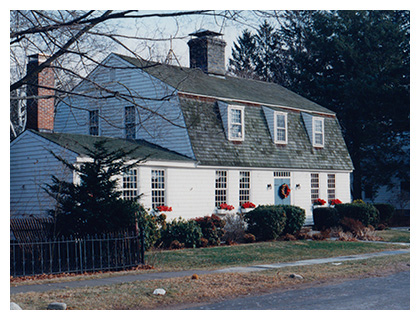
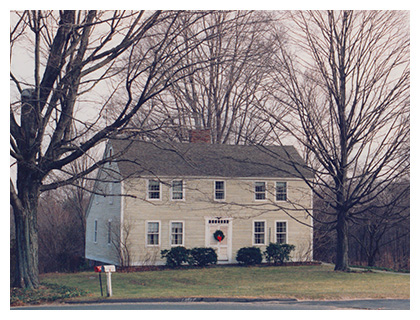
Tolland thrived during the mid-to-late 1700s due almost entirely to the Post Road. This road, laid out in part along the old Indian “Great Trail,” was the main route between Boston and New York City. It ran east-west through Tolland along modern-day Route 74 (Tolland Stage Road), running parallel to the green in the town centre. The Post Road brought travelers and stagecoach riders of all types. It also brought services to support the influx: taverns, leather shops and carriage-makers.
The innkeeper Joseph Hatch appears in official town records as early as the year 1718. In 1722, Hatch became Lieutenant of the first organized militia. Over the next half-century, Tolland soldiers would fight in all of the major conflicts of the restless British Empire in North America, finally soldiering arms to fight the Mother-country itself. Samuel Chapman took over for Hatch in the 1730s. He was at the head of Tolland soldiers in an expedition against the French bastion of Louisburgh, modern-day Nova Scotia, in 1745. He would die there. The French and Indian War saw active volunteerism on the part of Tolland militia. They marched with an expedition on Crown Point in 1756, of which Azariah Wills was captured and taken to Canada. He escaped, but fell sick and died on the return. Tolland men marched off but were too late to save the besieged Ft. William Henry in 1757. In 1762, a fated expedition to Cuba took the lives of a score of Tolland men. Of the 27 who enlisted, only 4 returned. One of those was Solomon Wills. Wills was Captain of the militia when the War for Independence began in 1775. Tolland men took part in the investment of Boston, and would fight in Washington’s disastrous New York campaigns of 1776. A headstone in the old section of the cemetery off Cider Mill Road tells the story of Serj Elijah Benton (Sergeant Elisha Benton), who was captured in these campaigns, contracted smallpox and was released, dying upon his return. But despite the dark, early years of the Revolution, victory was in the stars. And Tolland was poised to prosper with their freedom gained.
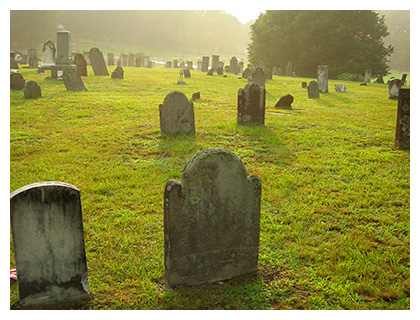
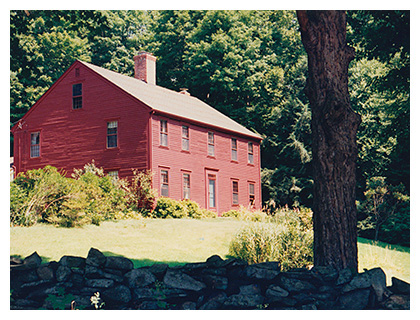
The townspeople had supplied food and resources to the cause. Sorghum and molasses, produced on Sugar Hill, livestock, provisions, and such skills as blacksmithing and carpentry accompanied many soldiers into the ranks. But with peace, inhabitants could turn their attention back to their self-sustaining, agricultural ways. There were many mills—saw, cider, and grist—powered by the plentiful water sources. Large landowner Zebulon West, known for his “good temper,” and soldier Samuel Chapman, who it was said “never laughed in his life,” actually owned slaves who helped work the land, a trade that was soon outlawed in the state. Tolland could boast of town physicians, and many schools dated back to the early years of settlement. But one occurrence would do more to enliven the prosperity of the town than anything else, the creation of Tolland County in 1785; Tolland as the seat. Tolland became a judicial and administrative centre, and was soon, as Weigold described, well-served by “the thinking crowd” of lawyers and theologians. A courthouse was built as was the necessary jail with its whipping post and stocks. The original jail was made of wood which soon posed a problem; “inmates might escape by setting fire to it.” A stone structure accompanied the new century.
This new century would see population grow to over 1600, a Norwich lawyer predicting with grand optimism that the town was soon to become a “port-of-entry, with vessels steaming up the Skunkamaug River.” By 1800, Tolland seemed to be living up to the hype. Stagelines were arriving on a regular schedule, a post office had been built, and the town was only a decade short of having its own bank. Tolland had a very active spiritual life, social clubs were in abundance, a “Lyceum” debate club met regularly, dances were held, and wealthy sport hunters came from as far away as New York to hunt. An early newspaper boasted that Tolland had, “a furnace for casting iron, 3 grain mills, 2 fulling mills (the process of bulking up material for clothing), 3 distilleries, 3 tanneries, 4 stores, 3 church societies, a social library, 13 schools (all one room, rustic cabins), 2 clergymen, 3 attorneys and 4 physicians.” It was a quarter the size of the state capital in Hartford. But as population records show, Tolland was soon to face the twin reality that the west was calling and good land was becoming hard to find. From 1830 until the Civil War, the population would begin to decline. The population high of 1700 in 1830 would not be equaled again until 1950. “Go west” was a phrase that was to draw the ear of many. Probably the most notable would be Noah Grant, who lived along the road that gave rise to the earliest settlement in Tolland, and still bears his name: Grant Hill. Noah, the grandfather of the Union hero and president, Ulysses S. Grant, followed the surging tide of residents moving beyond the Appalachians. With so many of the younger generations moving on to what would become Ohio, Indiana, and Illinois, Tolland settled into the easy groove of history that Loren Waldo described as a “gentle current.” And so came to a close the early, formative days of Tolland, Connecticut.
* * *
It has been a long while since I journeyed to the distant horizons beyond my hometown. Perhaps the metaphorical “good land” was my end goal. Maybe it was just circumstance. Whatever it was that set my sights beyond its borders, nostalgia brings me back to this place “not calculated to interest the marvelous.” It isn’t the same place that I left behind, for sure. But as long as memories remain, nostalgia won’t be far behind.
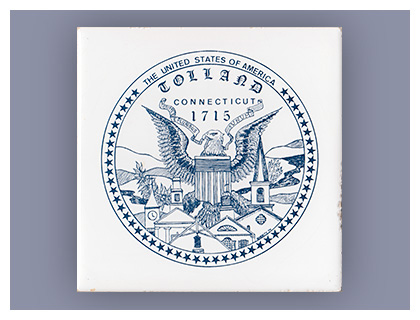
Also, check out this unique story of ageless friendship with the mentioned Revolutionary War Sergeant, Elisha Benton » MY (VERY) OLD FRIEND
Research Sources:
Aside from various pamphlets (given to my parents on moving to Tolland in 1966), the majority of research for this piece was taken from Harold Weigold’s Tolland: An Old Post Road Town, printed by The Pequot Press for the Tolland Historical Society in 1971—and the highly informative program, Tolland, Connecticut: 1715-1965, put together for the town’s 250th anniversary. (It should be noted that Weigold’s sources included the other two significant histories of the town: Loren P. Waldo’s The History of Tolland [1861], and J.R. Cole’s The History of Tolland County [1888]). Finally, the short historical summaries of Helen Needham proved valuable guides, especially in relation to Tolland’s Town Green.
“Forever, Side By Side“ » A novel about Elisha Benton and Jemima Barrows written by John Cuffe.
» The Town of Tolland, Connecticut
